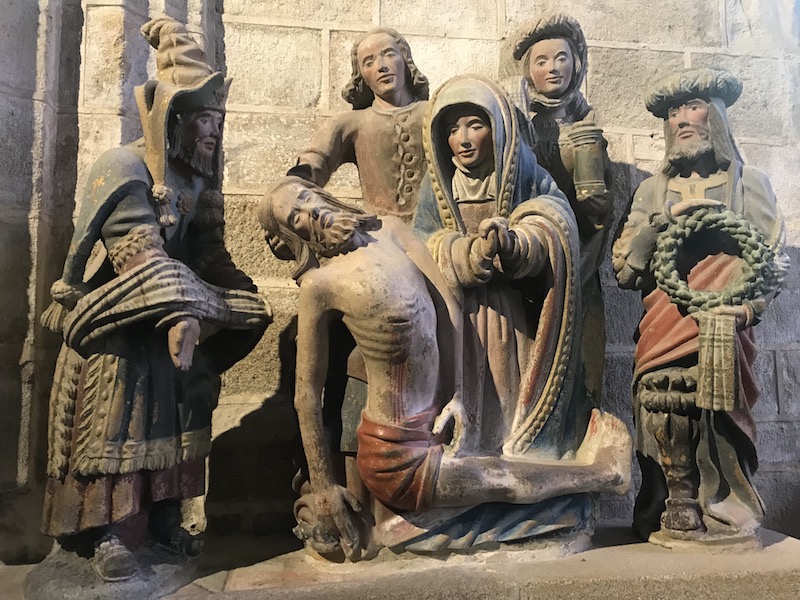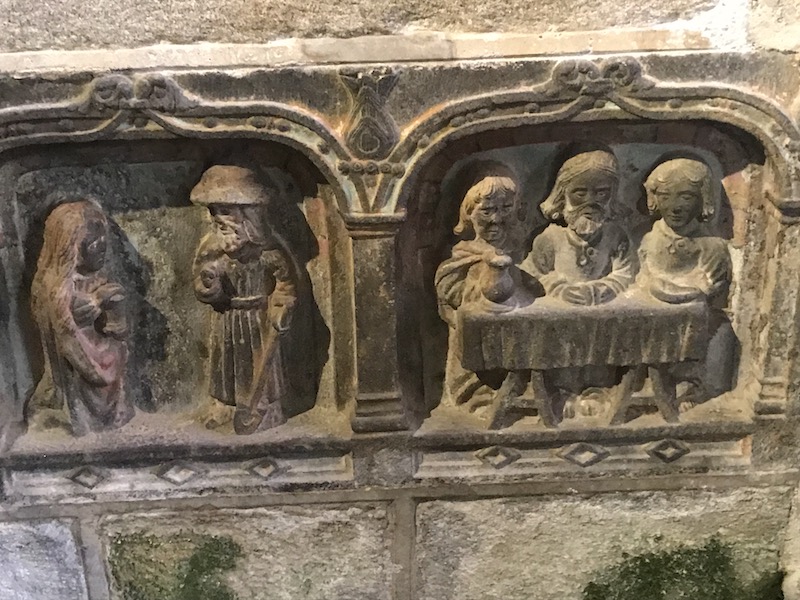Our Blog - Bretagne Trip - Summer 2021 - Locronan, France
Locronan is another of the Les Plus Beaux Villages de France ("The most beautiful villages of France"). The village's name means the "hermitage of Ronan", from the Breton word "lok" which means hermitage, and "Ronan" from Saint Ronan, who installed his hermitage there. Saint Ronan was an Irish Christian missionary of the 6th century who came to Brittany to teach the people. Further back in Roman times, Locronan was at the crossroads of two Roman roads, one coming from Quimper and heading towards the Crozon peninsula, the other heading towards Douarnenez. The large central square of Locronan is at the crossroads of these two Roman roads.Locronan reached its peak in the 16th century thanks to the sailcloth industry, which was heavily used by the Compagnie des Indes. Wonderfully preserved, the granite city boasts very beautiful Renaissance residences and a 15th century church. While it is a beautiful village, it is very small ... only about 800 people live there. However, it was quite busy with tourists the day we were there. A piece of trivia: Locronan was used as a setting in the Roman Polanski film "Tess" in 1979.
The tourist office gave us a nice walking tour, which took us up to the hills above the town to see the Kerguénolé Manor House. It was built in 1907.
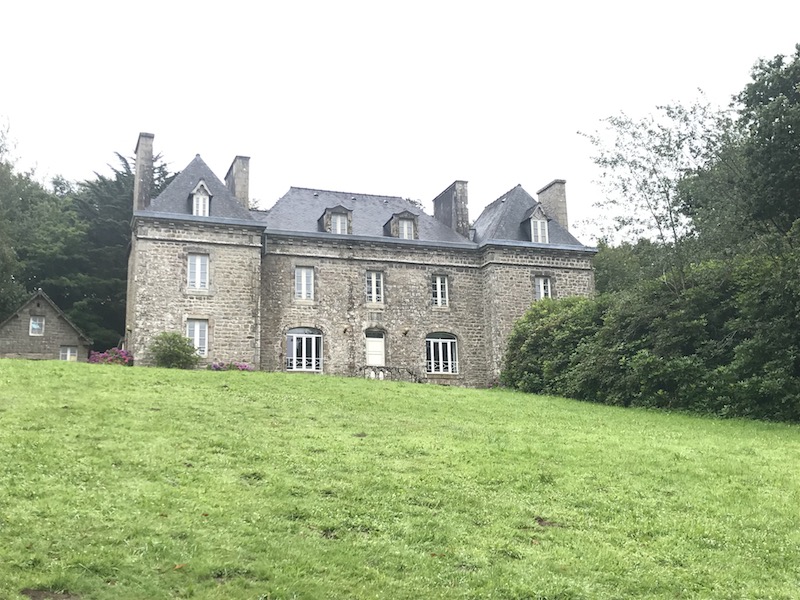
From there we headed back down the hill towards the town, and starting seeing the church and all of the well-preserved medieval granite houses.
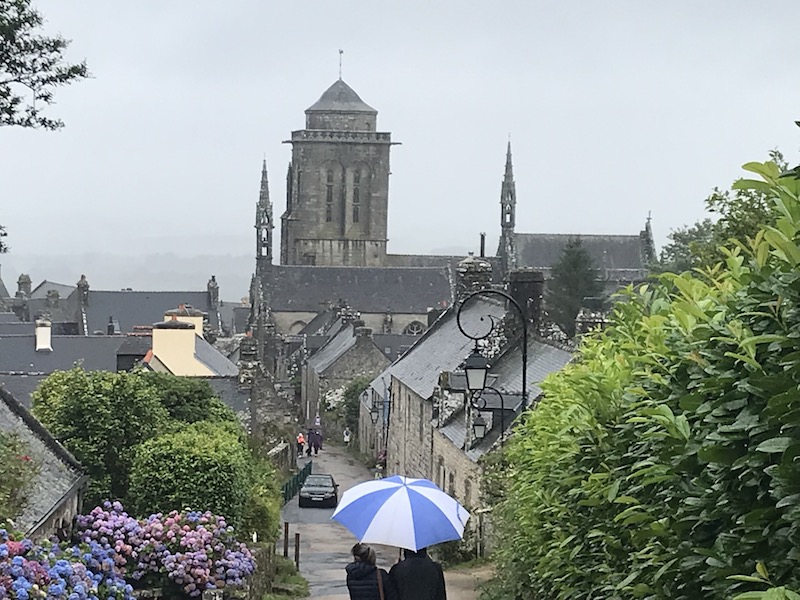
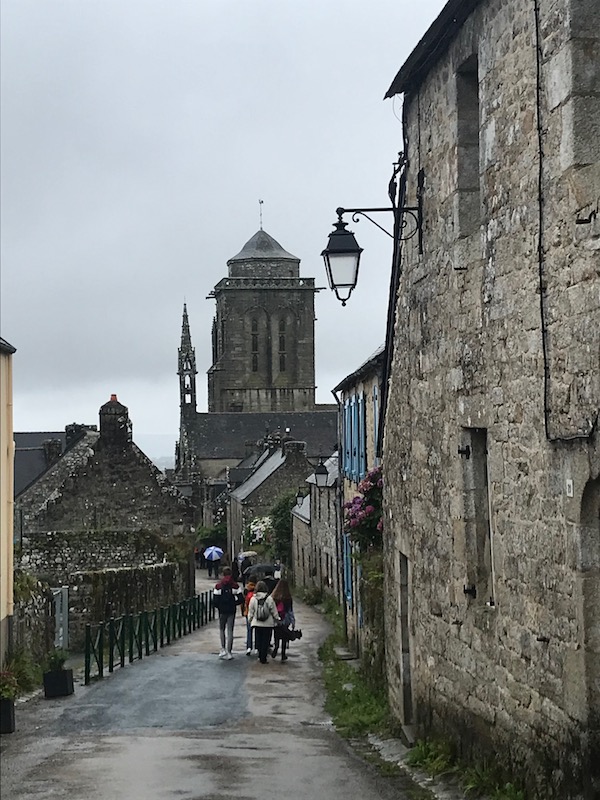

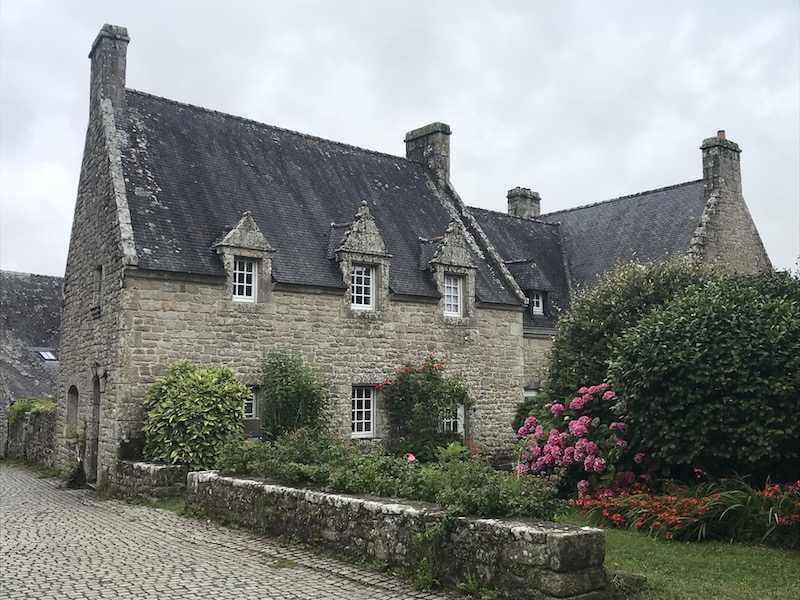
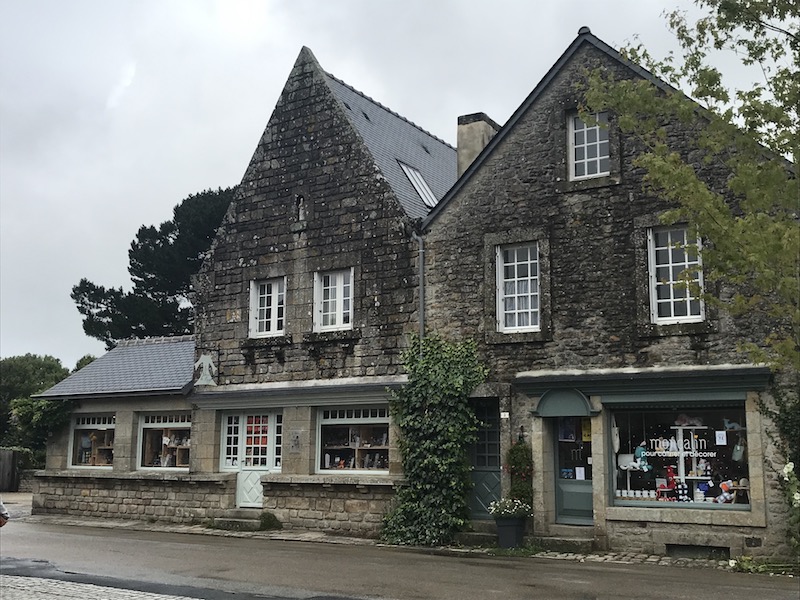
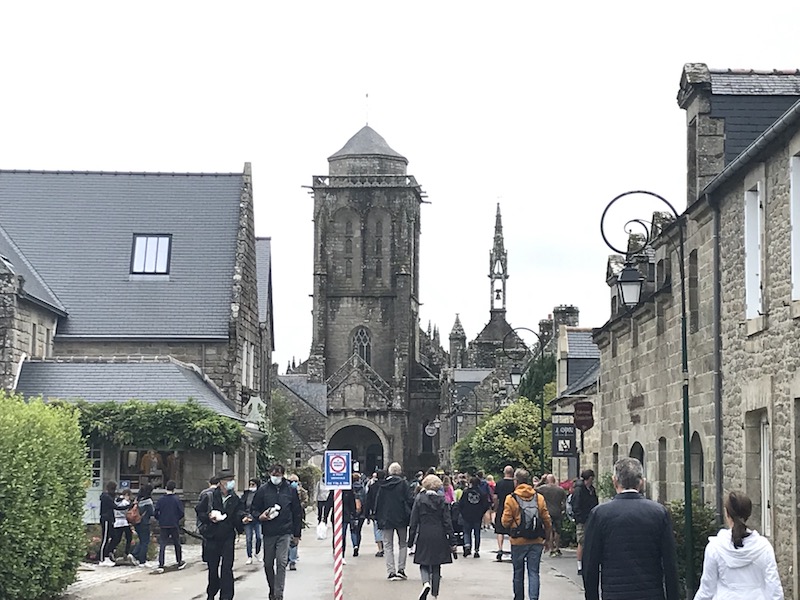

The town had lots of hydrangeas that seemed to be in full bloom!

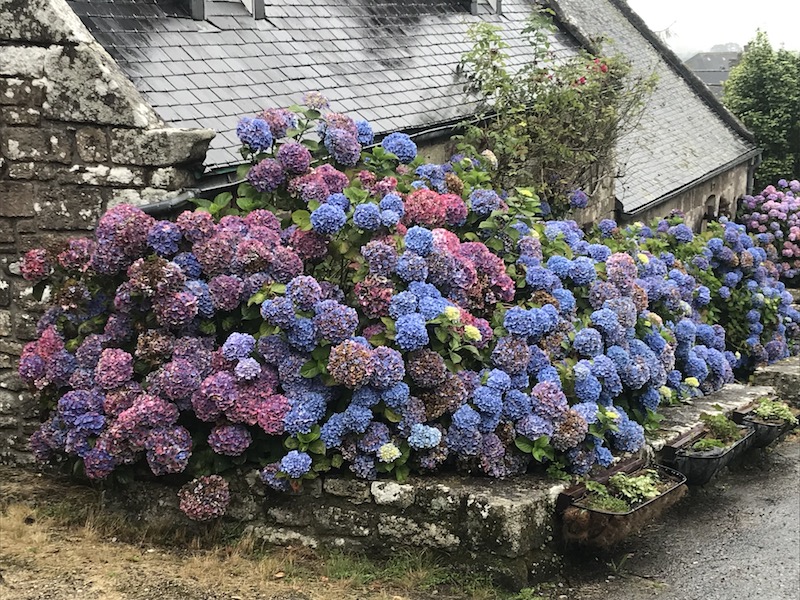
Again, no information on this, but it seemed like a very old wooden statue sitting in front of a house.
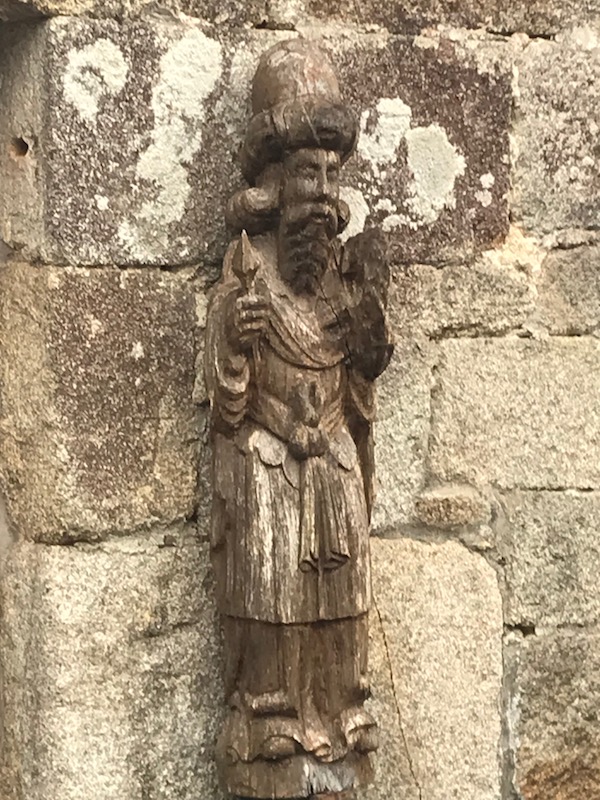
And I don't think this is the house the status was in front of, but it was on the same street. It is in the typical granite of the area and is from 1741 according to the date on the front.

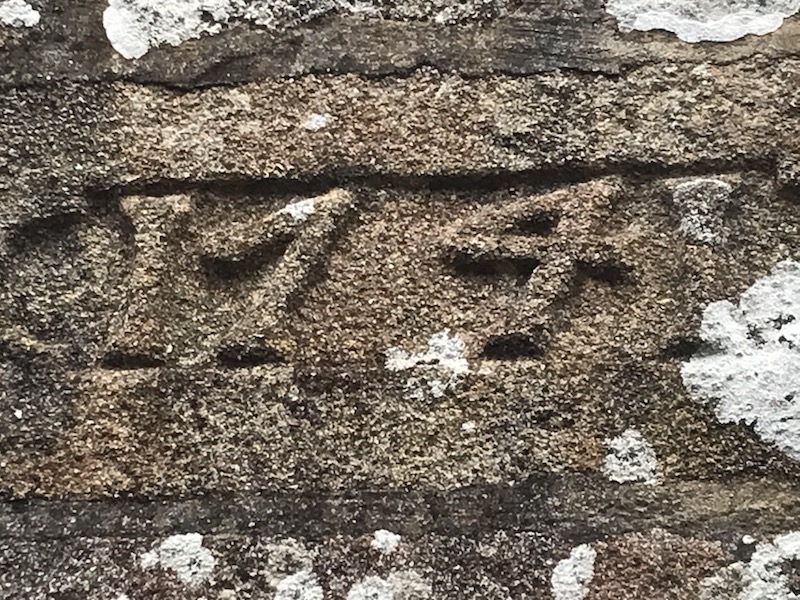
The main square of town is quite large and has an old communal well in the center. For a long time, this well was the only source of drinking water in the city. The square is lined with granite houses, reflecting the wealth of the fabric merchants and other notables in the 17th and 18th centuries.
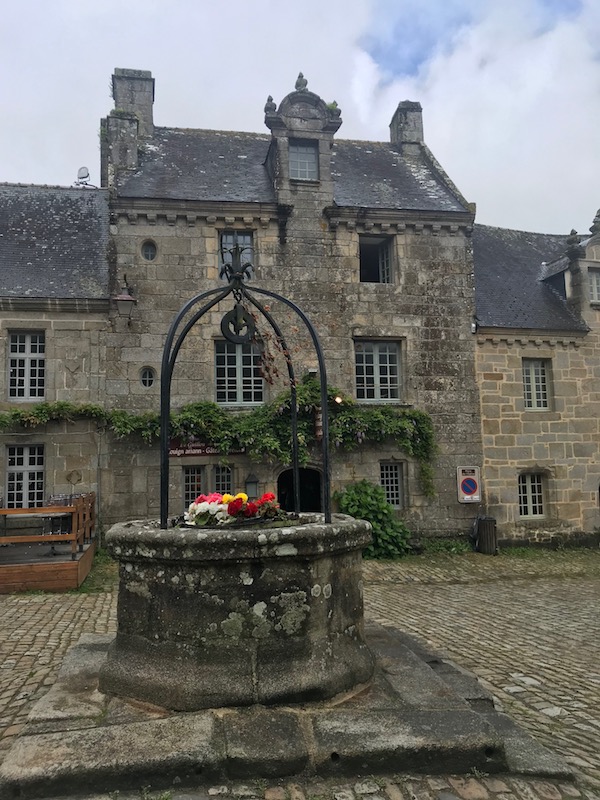
You've seen this church in a few other pictures of the town, the Saint-Ronan church. It was built between 1430 and 1480. You can see there are really two sections to the church: the main church on the left and the Chapel of Pénity to the right. The tomb of Saint Ronan is in the Pénity chapel, which was added in 1530.

Here you can see the choir, with the Gothic arches and ribbed vaults over the altar. I wasn't able to get close enough to get good pictures of the stained glass window.

The "Rosary" altarpiece was the work of the Maurice La Roux workshop in Landerneau and dates to 1668. The altarpiece with twisted columns on either side is decorated with 15 miniature medallions telling the story of the mysteries of the Rosary. A statue of a crowned Virgin Mary with Saint Dominic on one side and Saint Catherine of Siena on the other sits in the center. To the left is a statue of Saint Joseph and to the right Saint Joachim. In a niche at the base is a small sculpture of the Virgin Mary.

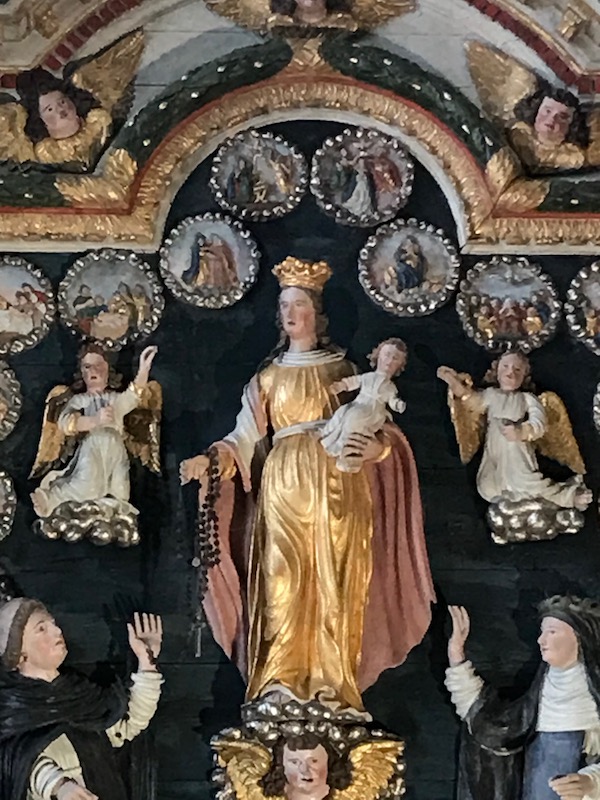
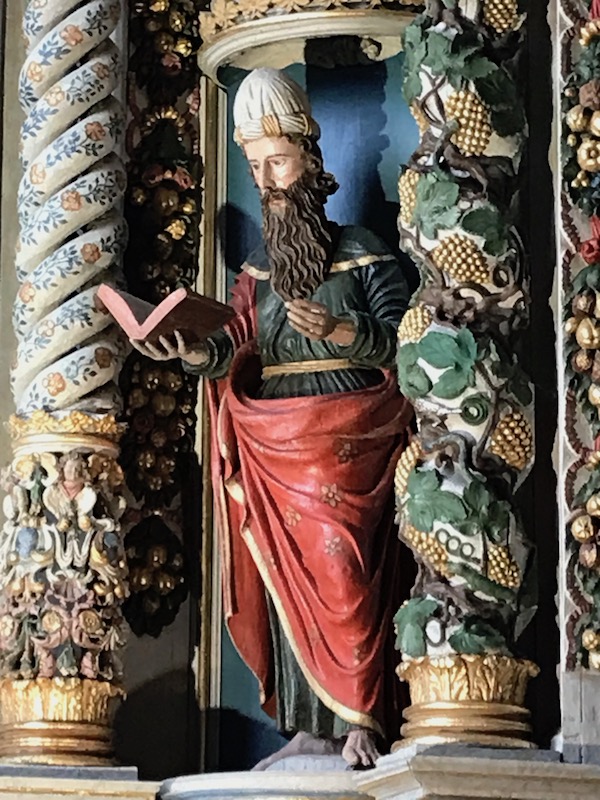
I took pictures of two of the stained glass windows, this one showing Joan of Arc (I think) in the middle.
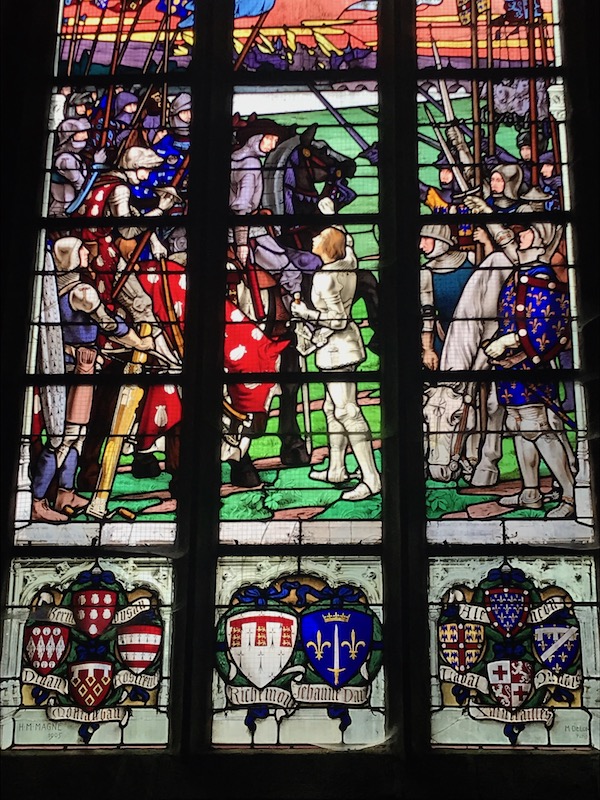
This one I have tried to show all of the detail ...This window depicts 2 scenes of Saint Ronan, with the phrase "Saint Ronan pray for us" (in French) at the bottom. The top row of 4 windows shows the transporting of the body of Saint Ronan after his death (pictures 2 and 3 below) and Saint Ronan bringing a little girl back to life (next 2 detailed pictures).

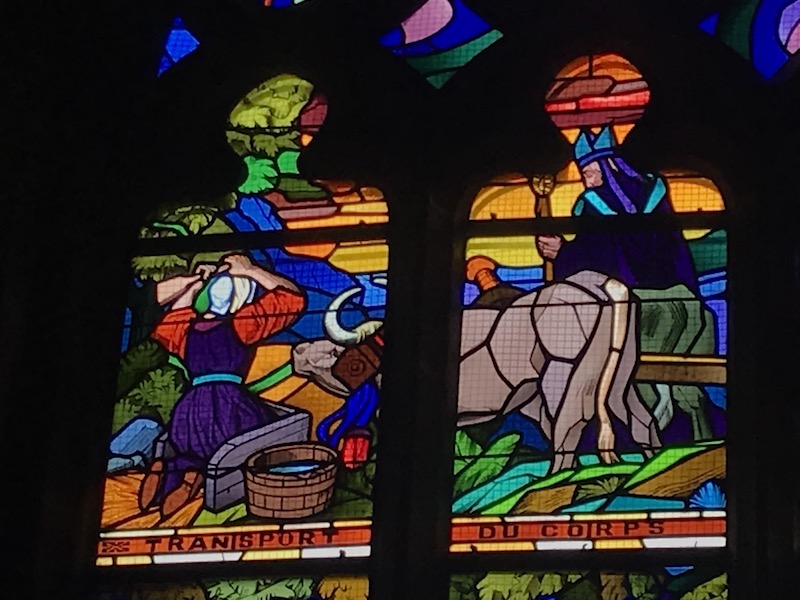


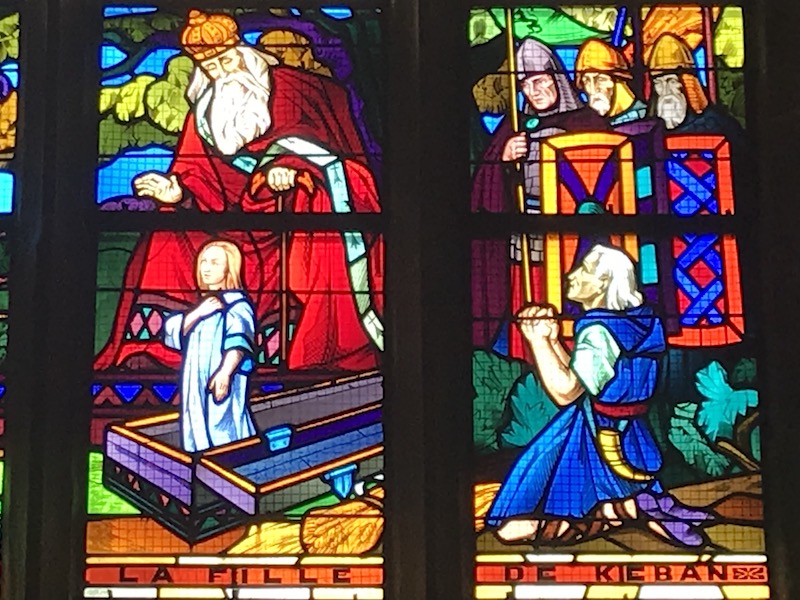
The pulpit dates from 1707 and is the work of the carpenter Louis Bariou and the sculptor Guillaume Le Poupon. It is somewhat unique in that it is colorfully painted (most that we see are just showing just the wood) and is decorated with medallions depicting scenes from the life of Saint Ronan.
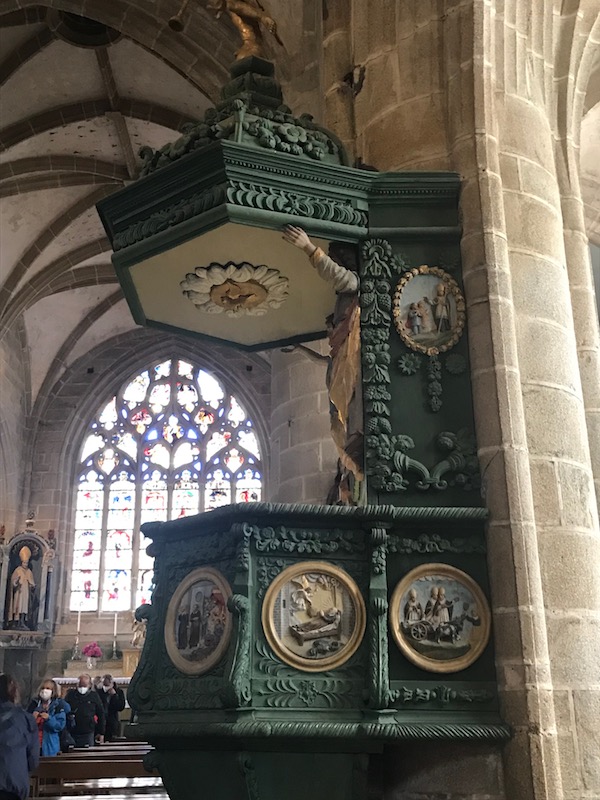

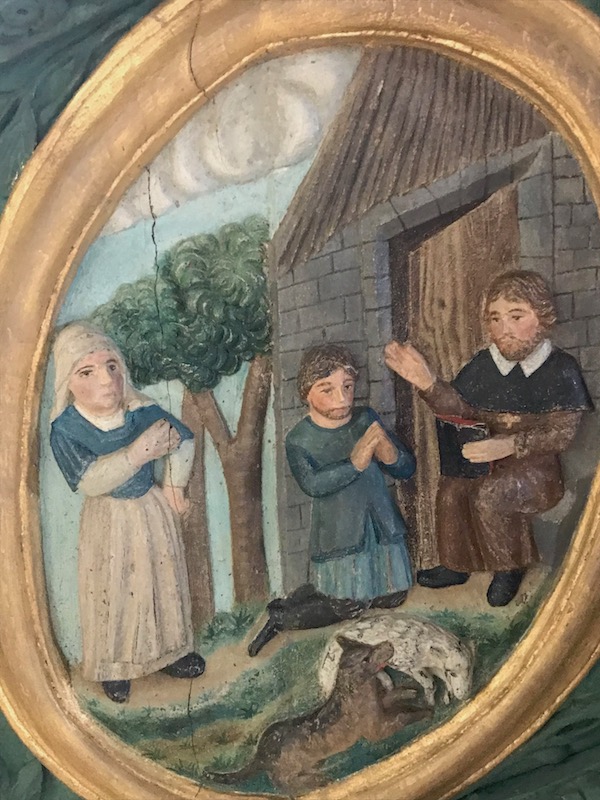
This is a 16th century pietà from the Chapel of Pénity called "The descent from the cross". It is carved from stone and then painted, and here we still have some of the painting intact. In the sculpture, Joseph of Arimathea and Nicodemus surround the Virgin Mary who is supported by John the Evangelist. Mary Magdalen stands to the rear. Joseph of Arimathea holds the shroud which will cover Jesus' body and Nicodemus holds the crown of thorns.
